Designing a family home is challenging because the family's needs change as they grow. That's why you have to plan for change. Adam Dettrick Architects' have designed Northcote House to be flexible enough to adapt to the family's needs over time...
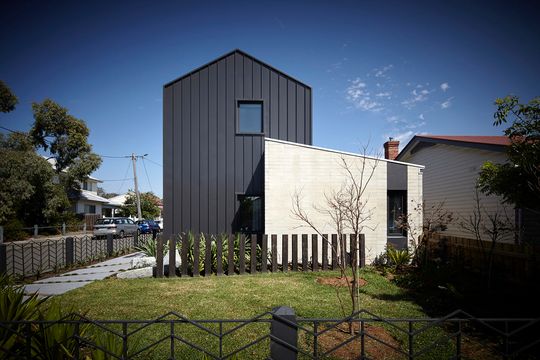
Set on a corner block in the thick of post-war bungalows in Melbourne's Northcote, this new home feels like it belongs in its neighbourhood. Homes from this era were built to tight budgets, with rational floor plans, humble materials, and minimal decoration and details. The design, therefore, honours that tradition with familiar gable and skillion roofs and humble but naturally beautiful materials - concrete block and COLORBOND® steel.
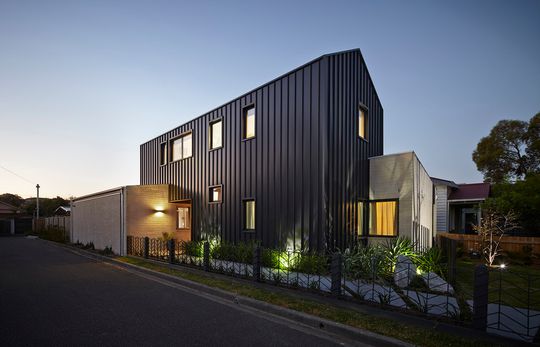
Architect Adam Dettrick respects the neighbourhood character by keeping the height of the home low on the neighbour's boundary and saving the double height space for the corner where it becomes a local signpost or landmark. The verticality and colour of the steel's Finesse Nailstrip profile contrasts with the lighter, horizontality of the blockwork to create a dramatic but sympathetic street front.
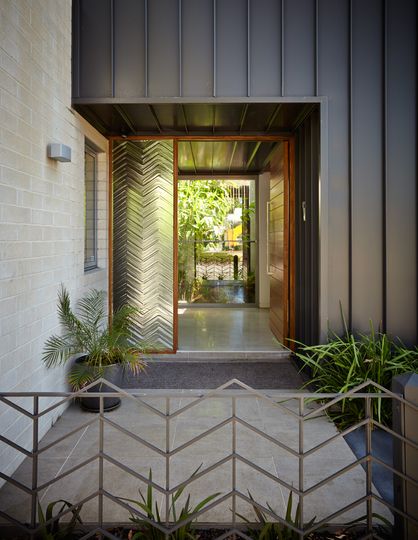
An entry is located off the side street, giving it a view over a small park opposite. Upon entry, a lowered ceiling opens onto a lush central courtyard which Adam describes as the "green heart of the house". The COLORBOND® steel continues from outside to become the ceiling in this space, making if feel more like a covered outdoor area. To the left are the living areas, while to the right you'll find the more private master bedroom suite and study and stairs to the upper level bedrooms.
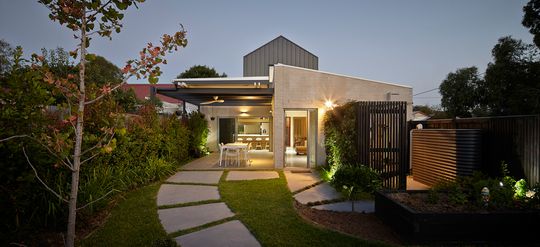
"The client’s brief was to provide a home where the family can interact, seek privacy, entertain, play and grow. Sustainability and affordability were other key drivers. The response was to provide a modern Australian home: flexible, adaptable, sustainable and affordable." - Adam Dettrick
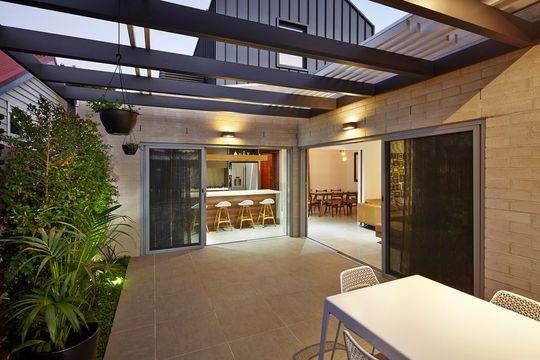
Adam achieved this flexibility by creating spaces which are connected, yet seperate. This breaks up the open-plan living area and means children and adults can enjoy seperate activities in other corners of the same space. Seamless connection to the outdoors expands the internal space and creates flexibility for indoor/outdoor living.
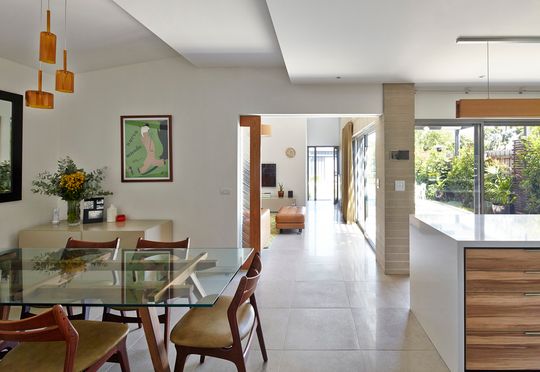
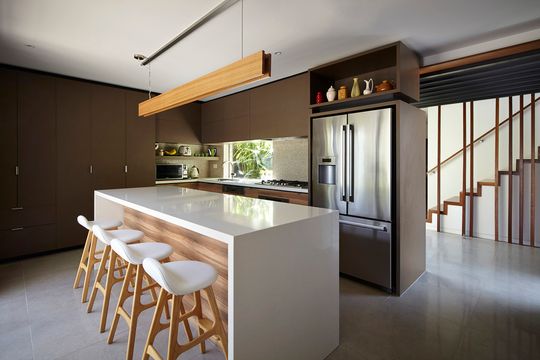
The master bedroom is intentionally placed on the ground floor to ensure that even as the owners age they have easy access to everything they need. Another example of the home's built-in flexibility is the study next to the master bedroom. With access to a powder room, it can act as a guest bedroom or even a nursery close to Mum and Dad before bub makes the move to an upstairs bedroom. The home truly caters for all of the family's life-stages.
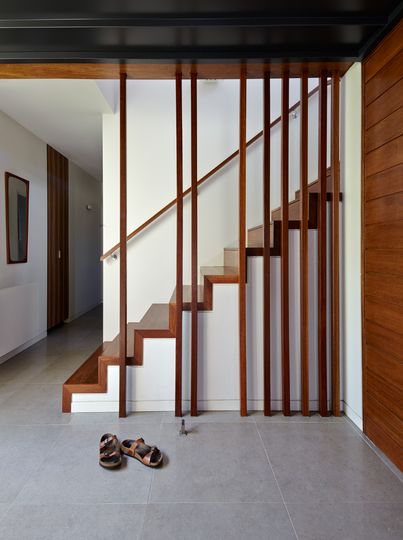
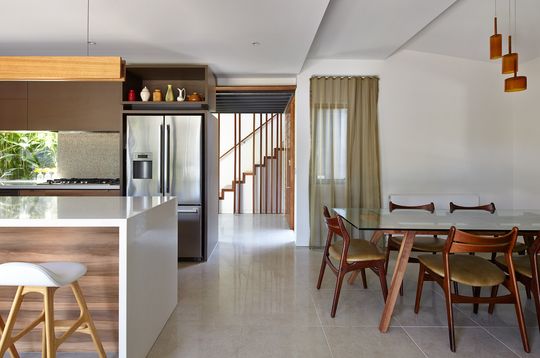
Passive design best practices help the home achieve a 7-star energy rating. Adam has carefully sited the project, ensuring the living areas have access to North and East light. The outdoor space creates a buffer from the neighbouring home to maximise natural light and winter sun. All rooms have multiple openable windows to naturally ventilate the home and the whole home sits on a concrete slab to keep it cooler in summer and warmer in winter. Exposed masonry walls in the living areas and the master bedroom further improve the home's thermal performance (not to mention they look great!). The architect has even incorporated double studs to increase the amount of insulation in the walls, locking in all that good work achieved by the passive design.
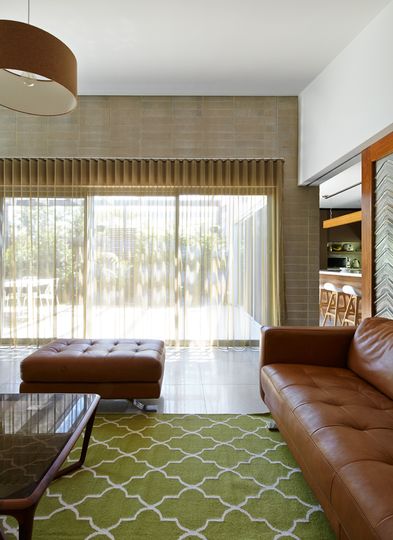
Northcote House is an exemplar of thoughtful, adaptable family living. As Adam says, "a robust and adaptable family home can be energy efficient, sustainable, beautiful, and affordable". This home certainly achieves all that. Thanks to hard-wearing and honest materials, the home will require little maintenance. Its passive design and energy efficiency ensures ongoing costs are minimised. With flexibility built-in, Northcote House will serve this family for many years to come.

